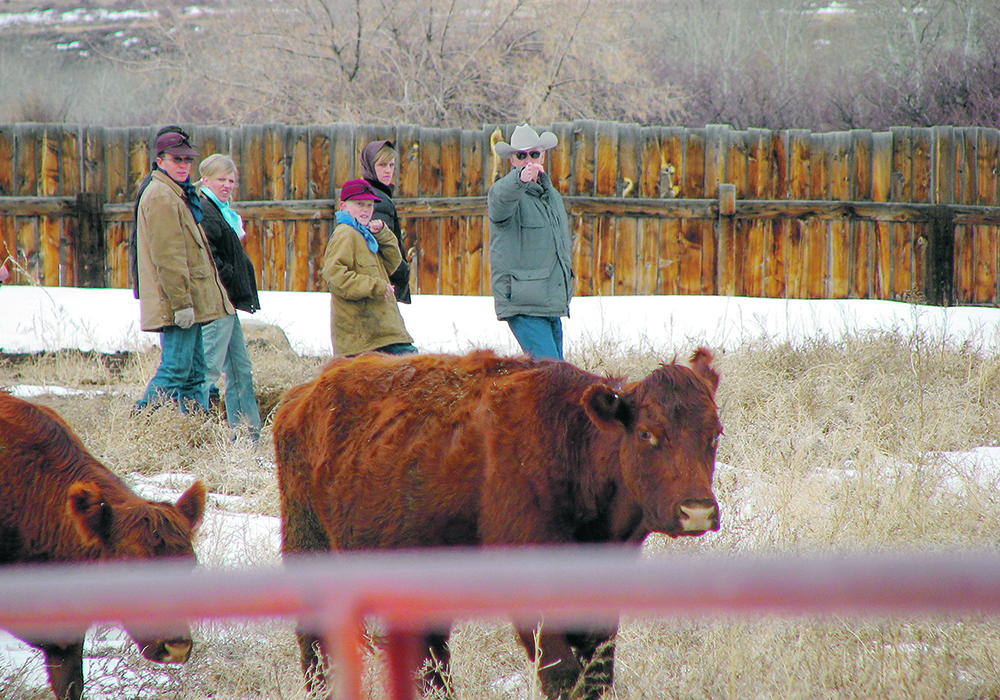Producers taught to learn to ‘read’ what an animal is saying and change position so it wants to go in the desired direction
Now and then, someone comes along with ideas that change the way people do things and sometimes even change an industry.
Bud Williams was that kind of person.
His unique methods of handling cattle are becoming known and adapted by dairy and beef producers because they are easier on the animals and the people who handle them.
Related story: Williams’ life dedicated to handling
Williams died in 2012 but his family and others continue to put on schools and clinics to teach people his methods.
Read Also

Why feds imposed EV tariffs
Moe and Kinew have a fight on their hands when it comes to eliminating the EV tariff. Canada has to worry about pissing off the U.S. and Mexico and hundreds of thousands of auto workers.
His wife, Eunice, 84, lives in Missouri and remains part of a legacy through the family company, Bud Williams Stockmanship.
“There’s no doubt that Bud’s methods are better,” she says. “Years ago, we went to consult with a dairy that milked 1,000 cows and had some problems. They had a hydraulic gate to move cows from the holding pen, which held about 120 head and had a wash pen, into the milking parlor.
The hydraulic gate kept shoving them closer to the entrance into the parlor. If a cow slipped and the hydraulic gate was still moving, it injured the cow. An employee had been killed by it because the fellow handling the controls by the milk parlor couldn’t see the back end.
“The dairy wanted Bud to show them how to get the cows to go into the parlor in a timely manner without having to use that power gate,” says Eunice.
“We went there to help them and were in and out for six weeks. We had some schools in the area, and while we were off giving schools, one of our students stayed at the dairy and helped teach the crew how to handle the cattle. During that six weeks, the dairy’s milk production went up 14 percent.”
Output and cost savings are what ultimately get people’s attention. Low-stress handling is not only better for the cows, but also for production and profit.
Beef ranchers have been slower to adopt low-stress handling methods instead of traditional ways. It’s often a situation where friends and neighbours help gather and work cattle, and it can easily become a rodeo.
“At branding time, especially, when people are roping calves, it often becomes a big party,” says Eunice.
“Bud used to compare this to a grocery store owner inviting all his friends and neighbours and turning them loose to do the various jobs; they might forget to stock the shelves and do inventory while they are partying.
“There are actually very few ‘rules’ for how to handle cattle efficiently and with minimal stress,” adds Eunice.
Williams’ method consists of learning to “read” what the animal is saying and changing position so it wants to go where the handler wants it to go and doesn’t consider the handler to be a threat.
The Williams method involved pressuring cattle from the side, at an angle rather than from behind.
“You take an angle that makes the cow realize that if she doesn’t move up you will bump into her, and she will hurry to get past you. But you don’t want to give a shove from behind as she goes past, or her attention will immediately turn back on you instead of going forward,” Eunice explains.
Many articles have been written about Bud’s stockmanship methods but if they use predator/prey examples they do not understand the concept, she adds. His goal was to work livestock with little stress and also remove existing stress.
“The only thing that makes stockmanship difficult is that our instincts are wrong for the proper way to handle cattle,” Eunice says, who advises patience.
“Bud put more pressure on cattle than just about anybody, but he applied pressure in the right place. That makes all the difference. He expected cattle to move right out, and he didn’t baby them, but if you are in the wrong place, this is very counterproductive and the cattle don’t trust you.”
Trust and confidence are vital.
“If you truly believe that the cattle are doing exactly what you are telling them to do (and you are projecting that feeling to them and in the right place) it will work.”
Humans often try to make the animal do what the handler wants, but Bud’s way is to let the animal do what the handler wants.
Most people chase the animals from where they are to where people want them to go. The traditional method of driving livestock is to frighten them away from the person, hopefully in the desired direction. But using fear and force to move animals is stressful. Constant or excessive pressure panics animals.
“Bud told people that you can walk behind livestock and not cause any problems as long as you aren’t pressuring them. There is always a correct position, and this spot moves as the animal moves. The angle you move in relation to the animal determines if you will maintain proper position. The speed you move is important, but not as important as the angle,” Eunice says.
“The ranchers who have adopted this way of handling stock and don’t need a big crew anymore say that the only downside is that they have to sneak around and get their cattle worked without the neighbours knowing, or the neighbours will be miffed because they weren’t invited.”















